The Lowdown
If want to make sure that you have enough backup power to handle your necessities during a power outage, the Goal Zero Yeti 500X is a great portable power choice.
Overall
Pros
- Automatically turns off when fully charged
- Small footprint
- Charges up to eight items at once
- Solar recharging is an option
Cons
- Nothing
Earlier this year, there was a massive power crisis in Texas that came as a result of severe winter storms, leaving over 4.5 million homes and businesses without power, many for several days. This inspired me to have a backup source of power for our home, should something similar ever happen. Fortuitously, I was offered a Goal Zero Yeti 500X for review, and we now have a solid solution.
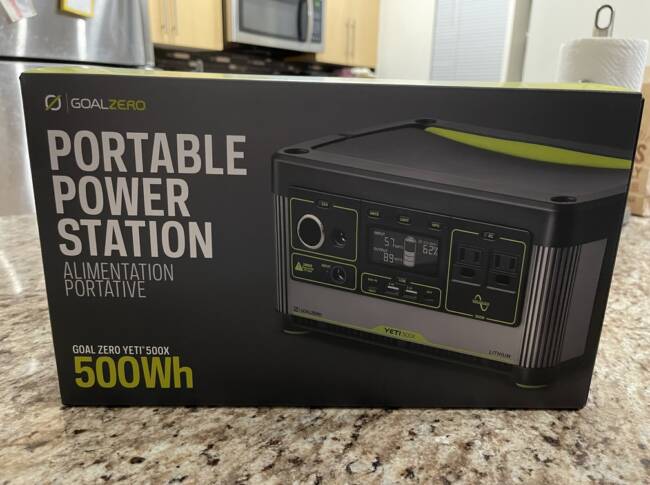
Released last year, the Goal Zero Yeti 500X is a mid-sized rechargeable portable power station that looks much more modern that the gas-guzzling generator my mom had that would power much of our home during power outages but wasn’t safe to use inside.
Packing a 505-watt lithium-ion battery, the Goal Zero Yeti 500X weighs 12 pounds, and it can easily be placed on a kitchen countertop for charging and then stored until needed. The power station has two USB-A ports that charge up to 8 watts, a single USB-C port that charges to 18W, and a USB-C PD Port that charges to 60W max, which is enough to charge a laptop like my MacBook Pro.
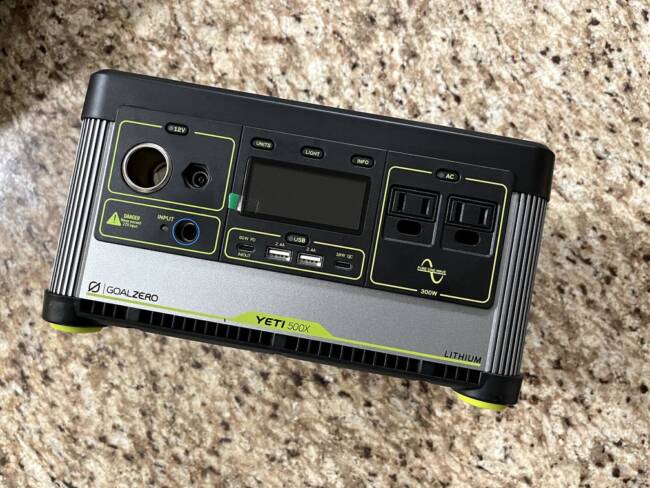
Those ports are great for all of your gear and gadgets, but for other items in your home, the Goal Zero Yeti 500X comes with a 12-volt port, a 6mm port, two AC power invertors — so you can plug some household items in, just like you would with a wall power outlet.
According to Goal Zero, you can charge as many as eight items at once, which is obviously nice. I’ve used it to charge my laptop as well as my wife’s and my iPhones and iPads simultaneously during a power outage, but that’s been the extent of my usage.
Here’s a list of what you can expect as far as recharges or runtime, depending on how you are using the Goal Zero Yeti 500X:
Recharges
- Smart Phone (12 Wh): 42
- Tablet (30 Wh): 17
- Laptop (50 Wh): 10
- POV Camera (5 Wh): 101
- DSLR Camera (18 Wh): 28
- Head Lamp (5 Wh): 101
Hours of Runtime
- GZ Light (4.5 W): 112
- Light Bulb (11 W): 46
- CPAP (65 Wh): 8
- TV (42″ LED) (100 W): 5
- Pellet Grill (60 W): 9
- Portable Fridge (25 W): 20
- WiFi Router (25 W): 20
Bear in mind that this isn’t a full-size generator, so you aren’t going to be able to plug a full-size refrigerator into the Goal Zero Yeti 500X and expect it to work, but it will make sure that you can power smaller necessities like the ones listed.
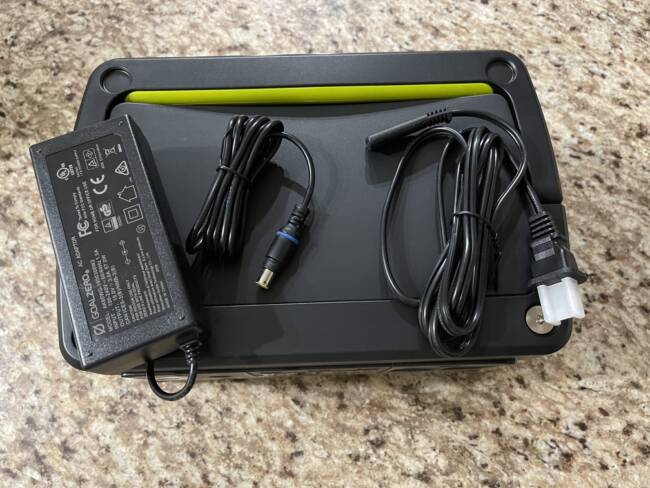
The Goal Zero Yeti 500X also offers a solar recharging option that is available with an additional purchase. The length of time it takes for the solar charger to be effective depends on how much sunlight your home gets, which can be very hit or miss in my apartment’s case.
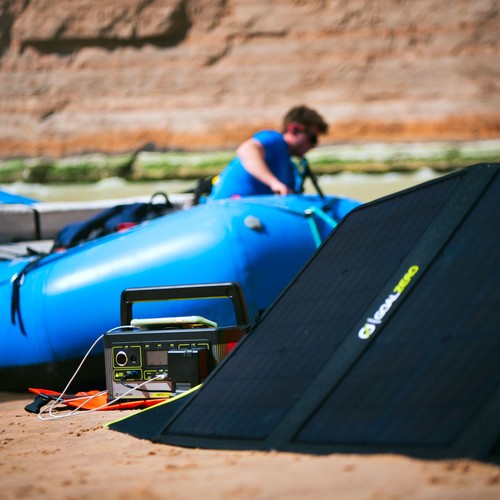
I was also sent the optional Goal Zero Nomad 50 Solar Panel, which would be handy during a long blackout. It’s not practical for us to use it at home, though, simply because the amount of space we have is limited. If you are camping or spending a day with the family at the beach, however, the combo of the Goal Zero Yeti 500X and the Goal Zero Nomad Solar Panel would mean uninterrupted power for whatever you might need it for.
The Goal Zero Yeti 500X has a compact, attractively rounded design that looks better than some of the others I’ve seen on the market.
It takes about 10 hours to recharge the Yeti 500X from a wall charger fully, and it can take anywhere from 12 to 24 hours to recharge it with the Nomad 50. The solar numbers vary so wildly because the efficacy of the solar charging depends on your elevation, the temperature, the time of year, and its angle and position to the sun
- Maximum input (180W): 3 hrs
- Car charger (120W): 4.5 hrs
- Wall charger (60W): 10 hrs
- Wall charger (120W): 4.5 hrs
- Nomad 20: 30-60 Hours
- Nomad 50: 12-24 Hours
- Boulder 50: 12-24 Hours
- Nomad 100: 6-12 Hours
- Boulder 100 Briefcase: 6-12 Hours
- Boulder 100: 6-12 Hours
- Boulder 200 Briefcase: 3-6 Hours
You won’t have to worry about potential overheating, thanks to the Pure-Sine Wave technology in the AC inverter, which pairs with the battery management system to automatically stop charging when the Yeti 500X is full, which is great because it means that you can keep it plugged into a socket so that it will always be fully charged when you need it. If you don’t keep it plugged in, you should plan on topping it off every 3 to six months.
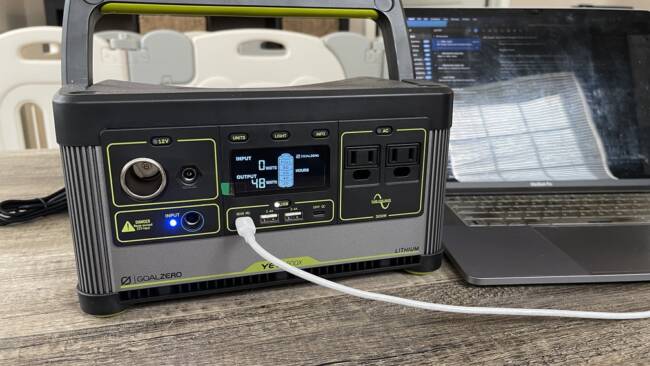
The built-in display on the front of the Goal Zero Yeti 500X is helpful, as it will inform you of the wattage being used on the devices being charged; it will also inform you on the remaining battery, which is helpful.
How to use your Goal Zero Yeti:
1. Press the power button located above each port you will be using. (When not using
certain ports, make sure to turn them off to conserve power.)
2. You’ll know the port is turned on when the white LED light on the button is illuminated.
3. Plug in your gear for power anywhere life takes you.
4. If possible, keep your Goal Zero Yeti plugged into a power source when not in use.
5. You can charge your Goal Zero Yeti and run your gear at the same time.
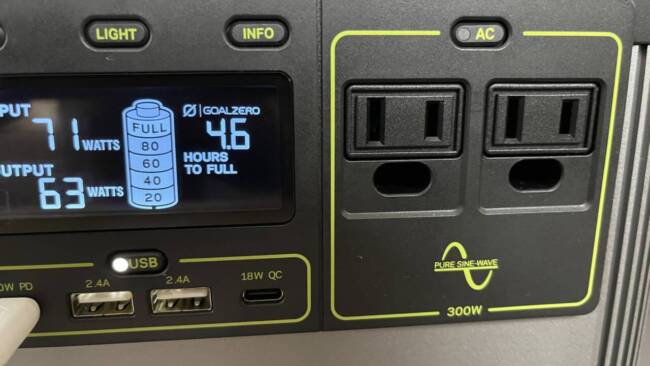
If you’ve ever experienced a sustained power outage, then you know how scary it can be not to have power for communication devices like mobile phones and tablets, necessary medical devices, and other small but necessary electrical appliances such as a mini-fridge for medicines in an emergency. In my opinion, the Goal Zero Yeti 500 X is a smart item to keep in every home.
Obviously, if you need something that can power larger appliances in a sustained power outage, you might need to look at a larger power station, and if you need something you can use to jump your car, there are other options. But if want to make sure that you have enough backup power to handle your necessities during a power outage, the Goal Zero Yeti 500X is a great portable power choice.
You can read its user manual here.
The Goal Zero Yeti 500X sells for $699.95 (it’s on sale right now for $559.96); it is available directly from the manufacturer and other retailers, including Amazon.
Source: Manufacturer supplied review unit
What I Like: Automatically turns off when fully charged; Small footprint; Charges up to eight items at once; Solar recharging is an option
What Needs Improvement: Nothing

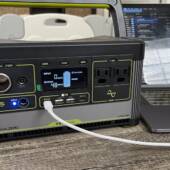
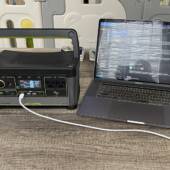
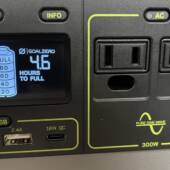
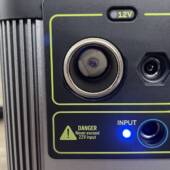
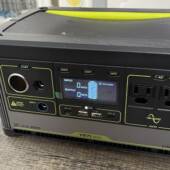
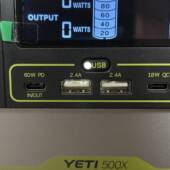
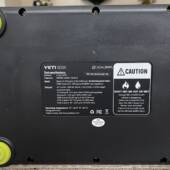
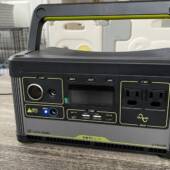

The solar feature is nice, and so is the ability to charge 8 devices! Perfect for travel and those pesky power outages.
Saw this one at REI this past weekend and it felt light but I assume that it was a display unit.
I want to get this or a Jackery at some point for my camping trips.